If your social media feeds were anything like ours over the weekend, then they were filled with the first official picture of Jared Leto as The Joker from Warner’s Suicide Squad, due out in cinemas next year. It’s significant not just for being the first DC film of the last few years to feature villains as a headliner, but the first to recast The Joker following the untimely demise of Heath Ledger in 2008.
Many have already dismissed the image, an all too familiar outpouring of fan rage and frustration. Typical posts commented on similarities to singer and performance artist Marilyn Manson, or expressed displeasure with the placement of the tattoos. By way of example, a fan posting as Mr. Sinister at SuperHeroHype commented “I just don’t see Joker there…if the goal was to deviate from the traditional Joker, congrats and if the goal was to create a new character…cool…just don’t ask me to support him“. Not to single the poster out, but the community response to this comment was largely positive. Yet others have embraced it as a positive departure from the Jokers of the past. So why is it so important to people? Do singular images like this even matter?
 The Clown Prince of Crime has always been one of the most important characters in the Batman universe because Bruce Wayne’s alter ego is just as much defined by his “otherness” to The Joker as he is by the death of his parents. For modern audiences, a man running around in a bat costume smacks of madness unless the world around him is equally mad. The Joker has always been the extreme counterpoint to Batman’s brand of justice. Despite decades of attempts to run away from the camp legacy of the 1960s Batman TV series, Caesar Romero’s Joker is perfect example of this. His Joker wore goofy makeup over a moustache, conducted comedy themed crimes and even entered a surfing contest (pictured right) with board shorts over his costume. Even as ridiculous as Batman (Adam West) was, The Joker was a parody of this, right down to his “utility belt” and “Jokermobile.”
The Clown Prince of Crime has always been one of the most important characters in the Batman universe because Bruce Wayne’s alter ego is just as much defined by his “otherness” to The Joker as he is by the death of his parents. For modern audiences, a man running around in a bat costume smacks of madness unless the world around him is equally mad. The Joker has always been the extreme counterpoint to Batman’s brand of justice. Despite decades of attempts to run away from the camp legacy of the 1960s Batman TV series, Caesar Romero’s Joker is perfect example of this. His Joker wore goofy makeup over a moustache, conducted comedy themed crimes and even entered a surfing contest (pictured right) with board shorts over his costume. Even as ridiculous as Batman (Adam West) was, The Joker was a parody of this, right down to his “utility belt” and “Jokermobile.”
Jack Nicholson’s Joker was a reflection of the late 1980s. Reportedly inspired by the dark tone of Alan Moore’s Batman: The Killing Joke and Frank Miller’s Batman: The Dark Knight Returns, Tim Burton’s Batman (1989) was everything that the 1960s Batman wasn’t. In retrospect, Burton’s aesthetics look lighter than modern sensibilities, Gotham showing its “sound stage” roots. Nicholson is neither Romero’s Joker, nor is he quite the Alan Moore vision of a sinister and anarchistic maniac. He is, to put it bluntly, a middle-aged man in a beret. Yet decadent middle-aged men were, and remain, villainous in the post-Wall Street world of the late 1980s. He’s decadent, unpredictable and uses corporate structures (in this case, chemical company “Smilex”) to enact his evil plan. If that wasn’t obvious enough, he literally “makes it rain” by throwing money at the masses.
In the last few years, the singular performance of Heath Ledger has achieved enormous praise, becoming a legend as big as The Joker. His take on the character was, in his own words, one of a “psychopathic, mass-murdering, schizophrenic clown with zero empathy.” Perhaps this was closest to Frank Miller’s vision of Batman, where if the Caped Crusader represented libertarian law and order, then Joker was the agent of utter chaos. Whether one agrees with all of the choices the film and director Christopher Nolan made, Ledger’s portrayal unquestionably deserves accolades for its uniqueness. However, Geek Tyrant 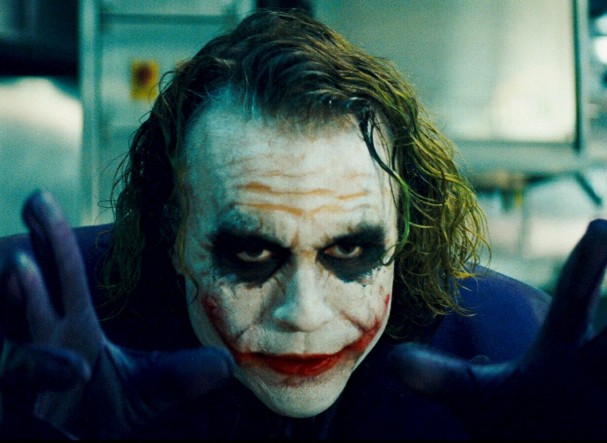 reminded us a few years ago, via a collage of anti-Ledger rants, that nobody really thought the late Heath Ledger could fill the shoes of Jack Nicholson. While the actor tragically died before the release of the film, he posthumously won the Best Supporting Actor Oscar for his performance, and was heralded as one of the high points in the film. After all, it was the performance that spawned a million memes and cosplay outfits.
reminded us a few years ago, via a collage of anti-Ledger rants, that nobody really thought the late Heath Ledger could fill the shoes of Jack Nicholson. While the actor tragically died before the release of the film, he posthumously won the Best Supporting Actor Oscar for his performance, and was heralded as one of the high points in the film. After all, it was the performance that spawned a million memes and cosplay outfits.
Which neatly brings us to the photo that broke the Internet this week. A hyper-insane, tattooed man with grills on his teeth. While sensible heads have prevailed and suggested that the tattoos are purely promotional in nature, designed to provoke the classic Brian Bolland image from Alan Moore’s Batman: The Killing Joke, it was an immediate shock to the system for the vocal fanbase. This seems to be the point though, for what is The Joker now if not an agent provocateur, urging us to rail against the system that produced him. An almost unrecognisable Leto has transformed into a character that recalls Ledger’s “dog chasing cars,” but the grills suggest Nicholson’s decadence, albeit filtered through a hip-hop façade.
There is a lot to like about the image of Leto, if taken purely as a visual, something that comic book readers have been contending with for decades. In a recent run of comics, Death of the Family, The Joker had allegedly removed his own face and was wearing it as a mask throughout. Frank MIller’s Joker was muscular and bulkier than his predecessors, a liberty of working in a future Elseworlds arena. Grant Morrison and Dave McKean played with not only his sexuality, but the very notion of this change, in the graphic novel Arkham Asylum: A Serious House on Serious Earth (1989). Morrison posited the notion that The Joker suffered from a kind of “super-sanity” which would cause him to reinvent himself constantly, and it was almost a new Joker emerging every time he escaped from Arkham’s confines. It was a notion he would later play with in various comics, but it gives weight to the idea that no single portrayal of the joker is the definitive one.
Throughout his various screen and comic book appearance, The Joker is a symbol, and symbols are important. The almost universally acknowledged fan-favourite of Mark Hamill as the animated series’ Joker is perhaps indicative that he works best as a fabrication of ink and colour, and attempts to bring him into the real world are flawed from the start. However, a string of actors and thousands of cosplayers around the world would probably beg to differ with this sentiment. We can always rely on fan reactions to be strong in both directions, and this conversation may be a very different one in August 2016 when the Suicide Squad film drops. Yet it remains important to ponder these symbols when they emerge, for what is The Joker if not a dark reflection of our times?
The Suicide Squad film will be released in cinemas on 5 August 2016 from Warner.
Want to keep up with all the latest? Got a comment? Start a conversation below, or take it with you on Behind the Panel’s Facebook and Twitter!
If you are an iTunes user, SUBSCRIBE to our weekly podcast free here and please leave us feedback. That’s how we get more attention on the Interwebs and move up the iTunes charts!

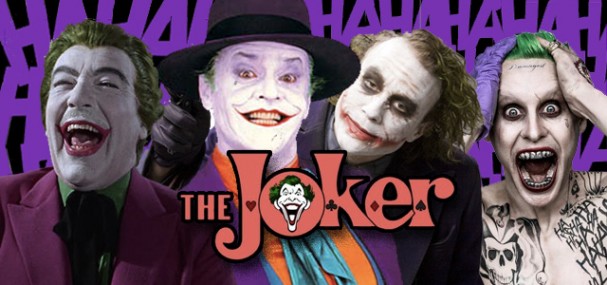
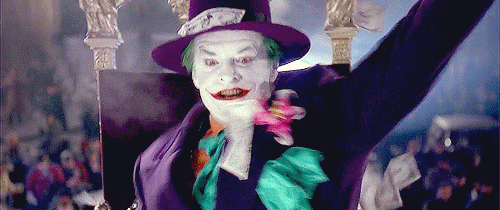



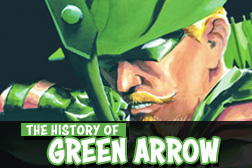

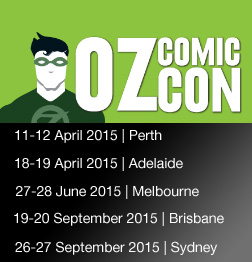





1 pings
[…] the controversial first look at Jared Leto’s Joker, writer/director David Ayer has released the first cast photo of his not-so-merry band of rogues […]